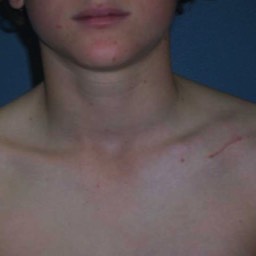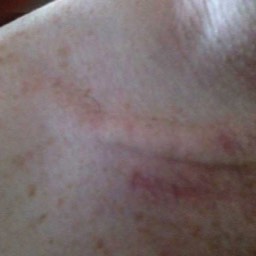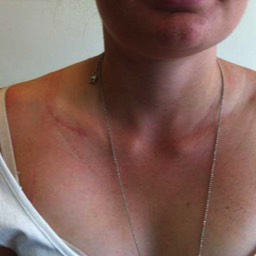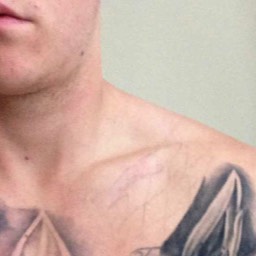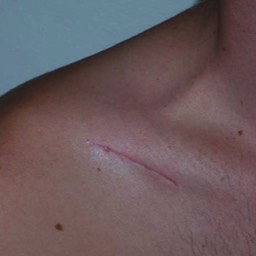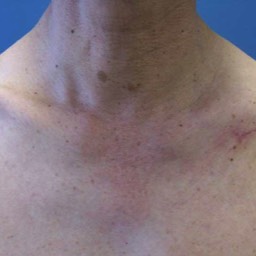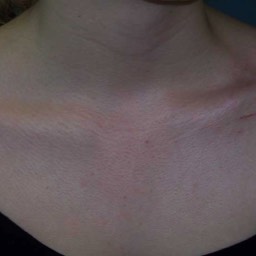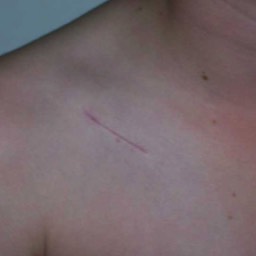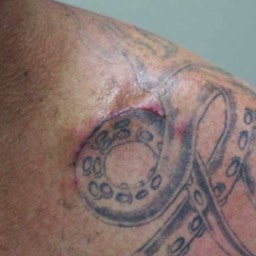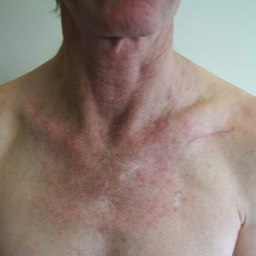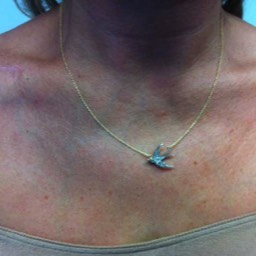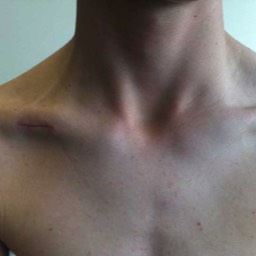Clavicle Fracture Surgery

My preferred method of treatment in the majority of clavicle fractures is with a plate and screws.
- Dr Duckworth
The operation involves coming into hospital for either one day or overnight. The fracture can be fixed with one of two methods using either a plate with screws or using a long pin that goes down the centre of the bone.
The surgery is performed under general anaesthesia in hospital. A small incision is made below the clavicle and the fractured bone ends are then exposed. The bone ends are then prepared to be realigned in their normal position. Often the fracture is in a few pieces and requires numerous screws in different directions to put it back in alignment.
Once the bones are aligned a plate is placed on top of the bone and screws placed through the plate to hold the fracture together. Generally at the time of surgery bone graft taken from around the fracture can be used to also stimulate healing.
The fracture when fixed, is imaged in the operating theatre under X-Ray to check it is in perfect position. Once the fracture is secured the wound is then closed and a dissolving stitch is used to close the skin. The patient is placed in a sling for comfort.
Learn more about clavicle fractures
Learn more about mal-united / non-united clavicle fractures
What happens after surgery?
Is it painful after surgery?
Generally patients feel pain relief quite quickly after surgery as the bones are in the right position.
How long am I in hospital for?
Usually only one night although some patients are only admitted for the day. It depends on your pain levels.
When is my follow up appointment?
We usually see our patients a week or two after surgery to check on progress. At this visit, you have an x-ray to check the position of the plate and screws. Your dressing will be removed and the wound checked. The sutures are buried beneath the skin and they will dissolve.
Further follow up is required approximately 5 weeks and then 12 weeks after your operation. At each visit an x-ray will be requested. I am able to assess the amount of callus (new bone) on your x-ray. The other important aspect to check on post-surgery x-rays is the position of plate. I also like to assess your movement to ensure that it is returning to normal. At each of these visits I will discuss with you the activities I am happy for you to resume.
Once your collarbone has healed, and your movement is back to normal and you have returned to your normal work and sports, there is no need to keep coming back to see me though about a year after your surgery you will most likely be contacted so that we can ask you to complete a questionnaire to see how you are getting on.
The clavicle can take a minimum of 6 weeks to heal and others can take 6 months to fully heal. Healing is determined by successive X-Rays and clinical examination.
How long am I in a sling for?
The length of time in a sling depends on the age of the patient, how many pieces the fracture was in and the stability of the fracture fixation at the end of the surgery. Some patients are really only in a sling for a week and some patients need to be cautious for up to 6 weeks. We ask that you wear the sling if you are going out anywhere where there is a crowd and thus a risk of being bumped or pushed.
When can I drive?
Usually between 2 to 3 weeks after surgery.
When can I play sport again?
This depends on the fracture. A general rule is between 6-8 weeks as long as the bones have healed adequately. Every fracture however is different and some athletes return earlier or later depending on the circumstances.
When can I return to work?
Usually within a week if you perform desk work only. Physical work could take 6- 8 weeks to return to.
Does the plate need to be removed?
Only if it bothers you which would only occur in 10% of cases
Will I need physiotherapy after my surgery?
It is very unusual to require physiotherapy after this surgery. The patient is the best physio. Following your surgery you can gradually start to use your arm more or less straight away, but avoiding using your arm above shoulder height, lifting anything heavy or putting your arm behind your back. Due to this early movement it is highly unlikely that any formal physiotherapy programme would be required.
How big will the scar be?
Dr Duckworth takes great pride in making the scar as small as possible. The scar on average will be between 3 and 6 cm long and the size will depend on the size of the plate needed to fix your clavicle properly. Here are photos of patients and their scars taken post-operatively.
For specific advice regarding clavicle fractures, please book an appointment with Dr David Duckworth on (02) 9806 3333
For appointments and enquiries, please phone (02) 9806 3333
8am to 5pm, Monday to Friday
© 2008-2024 Dr David Duckworth
